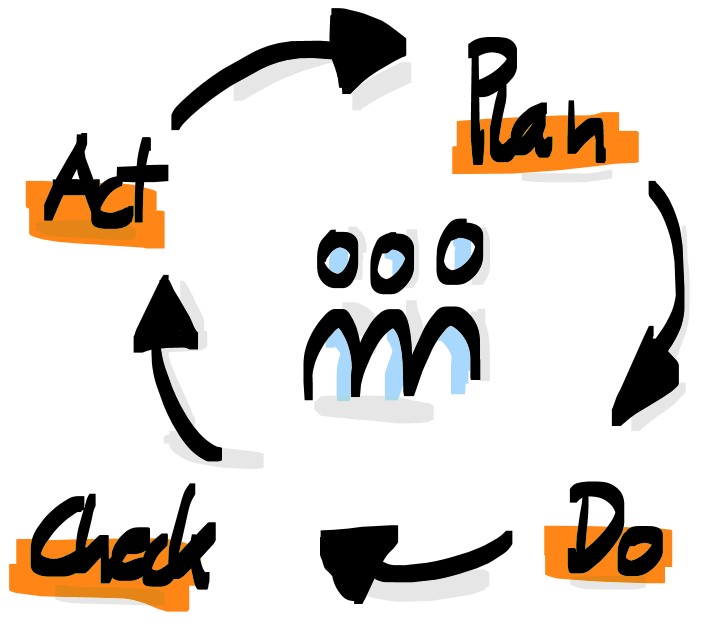Your boss had the glorious idea that everyone is going agile now? You might want to try it out yourself? But now you have a few questions? You’re not alone. For example, I was recently asked:
What Is the Basic Principle of the Agile Approach?
Agile is often thought of as just a methodology, which is understandable. However, it is more than a specific methodological approach.
It is rather an attitude. At least it was before it became a product.
As an organization, as a team, as a department, as specialists, we want to live permanently from our work and thus also to express ourselves. We can only achieve this through products, services and the work that satisfies our clientele in the longer term.

One of the most important elements of agile methods is therefore
to repeatedly ask yourself, your customers and business partners whether you are still on the right track and what can be done better under certain circumstances. This is how you can evolve, adapt and improve.
In principle, this is the basic philosophy of Agile collaboration.
At first, this may sound trite and hackneyed. But anyone who wants to work agilely should know:
These are not platitudes here.
At least they weren’t before agile degenerated into a consulting product for efficiency enhancements.
So, on the contrary, attitude and methodology are implemented quite stringently and lived very consistently. Agility and its methods only unfold their full effect in this way.
 Two principles are particularly important
Two principles are particularly important
Product orientation and quality focus
The product simply has to fit. After all, that’s the only thing the customer pays money for. Agilists therefore focus on aspects like these in everything they do, and subordinate pretty much everything else to them as well.
Permanent learning through feedback are two other important cornerstones of Agile.
Customer feedback on the product and collaboration is a key aspect of this.
But something else is truly novel and crucial (yes, even still in the “post-agile hype” era).
Namely, agile teams meet in regular and manageable rhythms to give each other open feedback on their work. Regardless of the product, they regularly talk about how they are collaborating.
After all, the quality of that collaboration plays a key role in shaping the quality of the product that customers eventually pay for. So what can or must we improve in the next two to four weeks?
This is, of course, a process that is anything but easy or conflict-free
and which requires a great deal of openness. After all, mistakes have to be admitted, opinions are exchanged, and the right path is fought over.
But all of this is important because it helps the team examine its assumptions, learn from mistakes, find a common path, focus on what is important, and improve competencies.
This is how the whole team becomes better. Step by step.
 So to be able to do this
So to be able to do this
the teams and their members need to be able to decide for themselves, within the given framework, how they do their work.
Self-organization therefore is the next important thing.It saves superfluous “approval procedures” and ensures speed and that people work more committed and satisfied.
This makes the work of teams better, faster.
And, in the end, more sustainable.
 Two principles are particularly important
Two principles are particularly important So to be able to do this
So to be able to do this